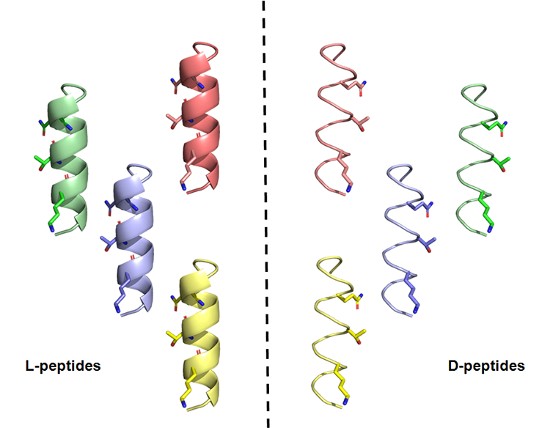Research on peptides at the University of Toronto shows promise in combatting COVID-19 according to a newly published paper in the Journal of Medicinal Chemistry, entitled “Computational Design of Potent D-Peptide Inhibitors of SARS-CoV-2.”
What are peptides?
They are strings of amino acids. When combined in groups they build proteins. But on their own, they have a significant potential medical upside. Today peptides can be found in medications treating diabetes and multiple sclerosis. But they also can be used in the fight to contain COVID-19 in all its variants.
It is a peptide within the spike protein that enables the virus to enter cells and replicate using the latter’s genetic information. The binding capability of the peptide facilitates the virus. Building a counterattack peptide, therefore, sounds like a reasonable strategy.
Peptides can be designed by playing with amino acids. They can be built to bind to a specific molecular target with far greater facility than proteins. Philip Kim, Professor of Molecular Genetics and Computer Science, at the University’s Faculty of Medicine, is the lead author, sees peptides as having distinct advantages over protein-based therapeutics. He describes them as having long-term stability, being inexpensive to produce (at least 100 times cheaper), and prophylactic to prevent infection using a nasal spray to apply.
The caveat regarding peptides is that in the body they rapidly degrade in the presence of proteins associated with our immune response. The answer to this challenge is designer peptides.
What are designer peptides?
Naturally occurring amino acids are left-handed. That’s the rotational direction of their single helix structure. All-natural peptides, therefore, are also left-handed and called L-peptides.
But using computers, Kim and his laboratory partners have designed right-handed peptides, mirror images of naturally occurring ones and designated D-peptides with the D standing for Dextra, the Latin word for right.
Laboratory partner, Pedro Valiente, has designed a number of D-peptides that ape naturally occurring ones that can be found in proximity to human cells in the body. The D-peptides bind to the surface of cells and the ones Valiente has created block the natural paths of entry for the COVID-19 spike or S-protein from entry.
In lab-grown cultures, the D-peptides have demonstrated that they can block COVID-19 from infecting human cells. In addition, because COVID-19 is airborne and often makes its first point of entry the nasal cavities, a prophylactic spray containing a mix of D-peptides would appear to be an effective preventive.
From the time of their first discovery of D-peptides’ ability to stop COVID-19, there has been a proliferation of mRNA vaccines and adenovirus vaccines and new antiviral medications that are in production or already distributed. As a result, Kim and his laboratory have looked beyond COVID-19 prevention, and are using D-peptides to target all coronaviruses with a goal to create a multivalent preventive treatment to stop future pandemics at a much earlier stage. Commercialization of the work is being done in partnership with Boston-Massachusetts-based Decoy Therapeutics.
A South Korean-based laboratory has done confirming tests on cultured human cells using the D-peptide treatment to deal with a range of COVID-19 variants. Kim has expressed confidence that his invention will work against the latest variant sweeping the planet, Omicron. Kim believes D-peptides can be used in highly targeted ways to deal with diseases such as cancer and Alzheimer’s. What are the timelines for seeing D-peptide treatments becoming available? Kim estimates two years.
















